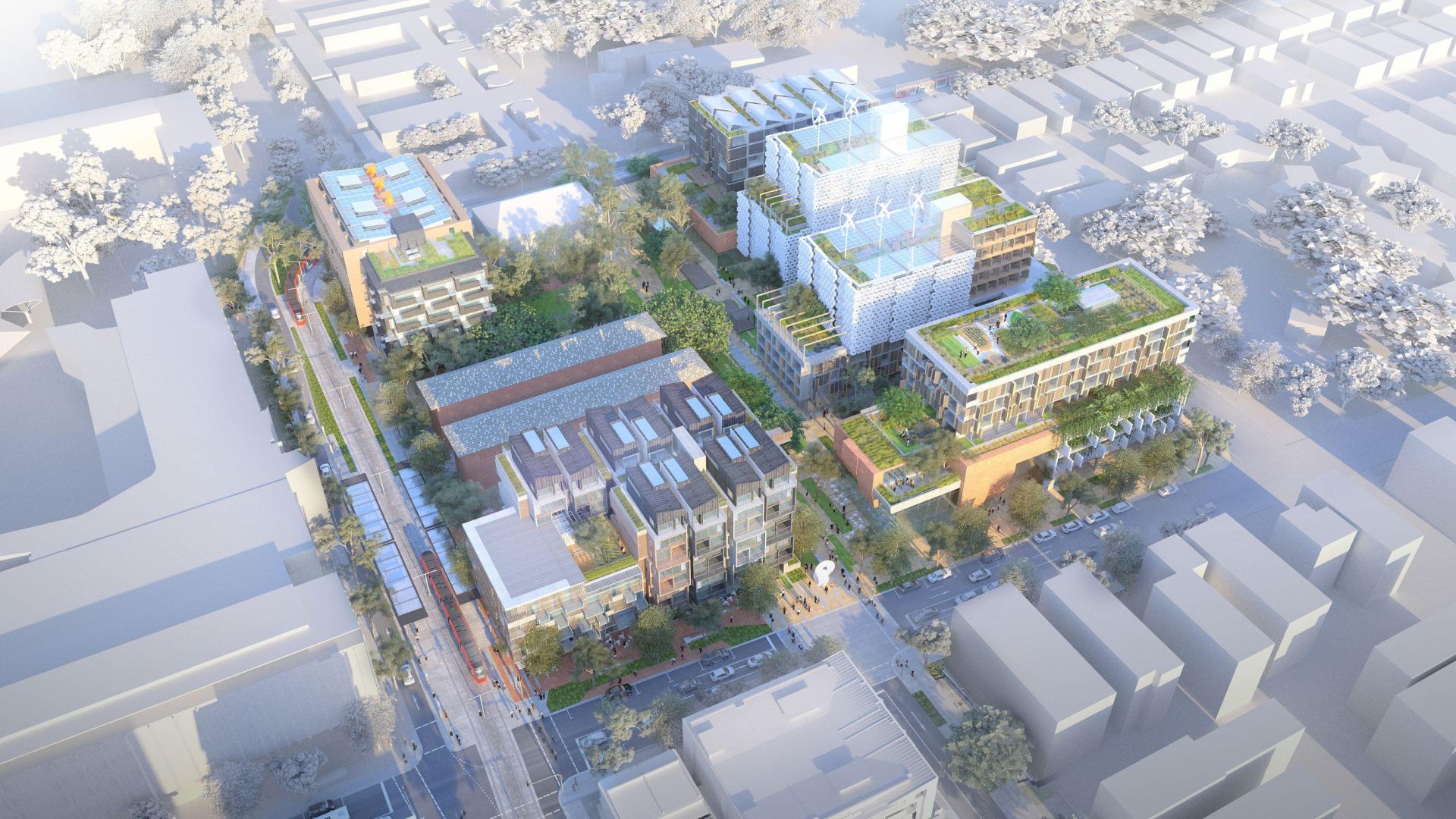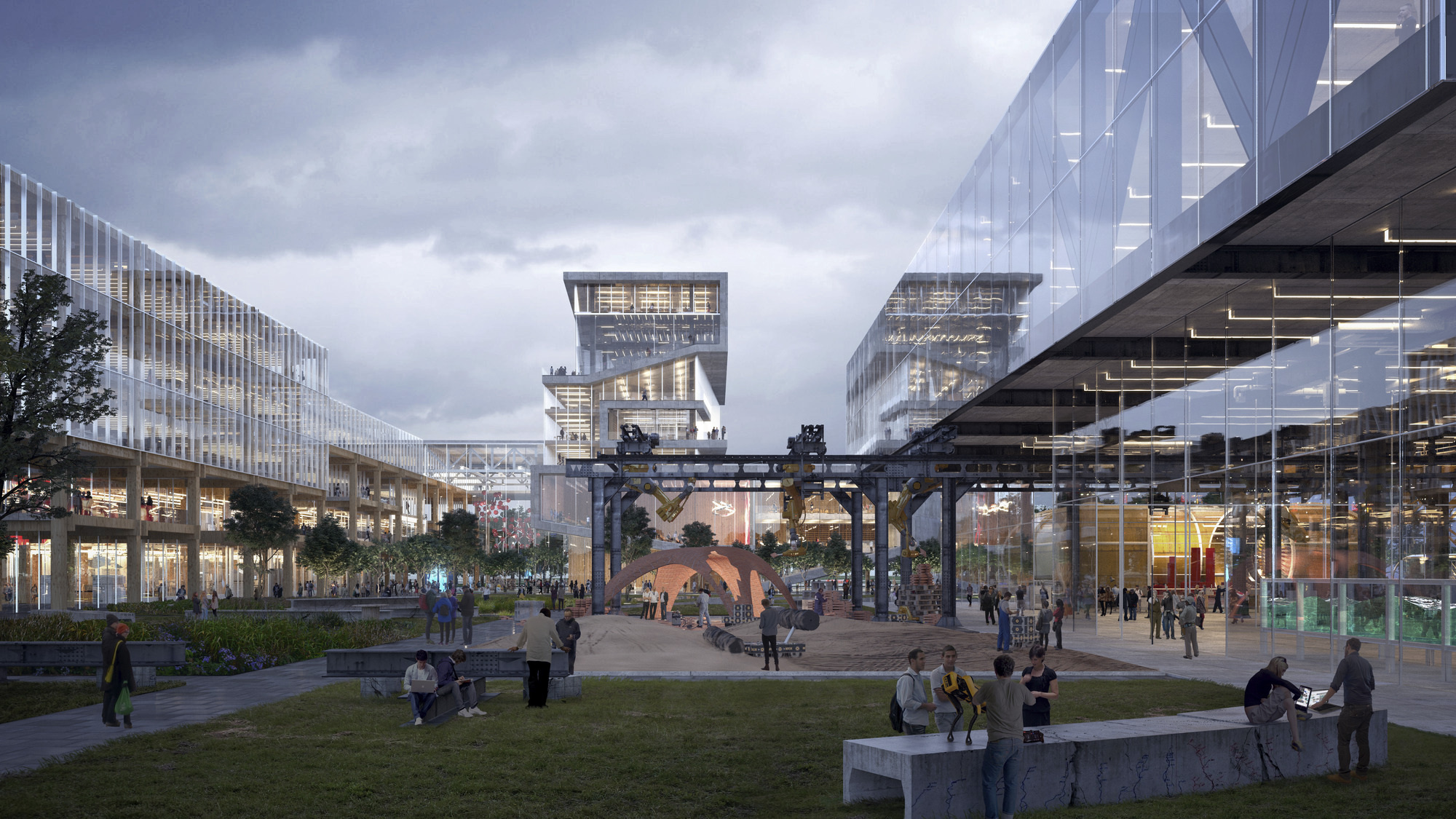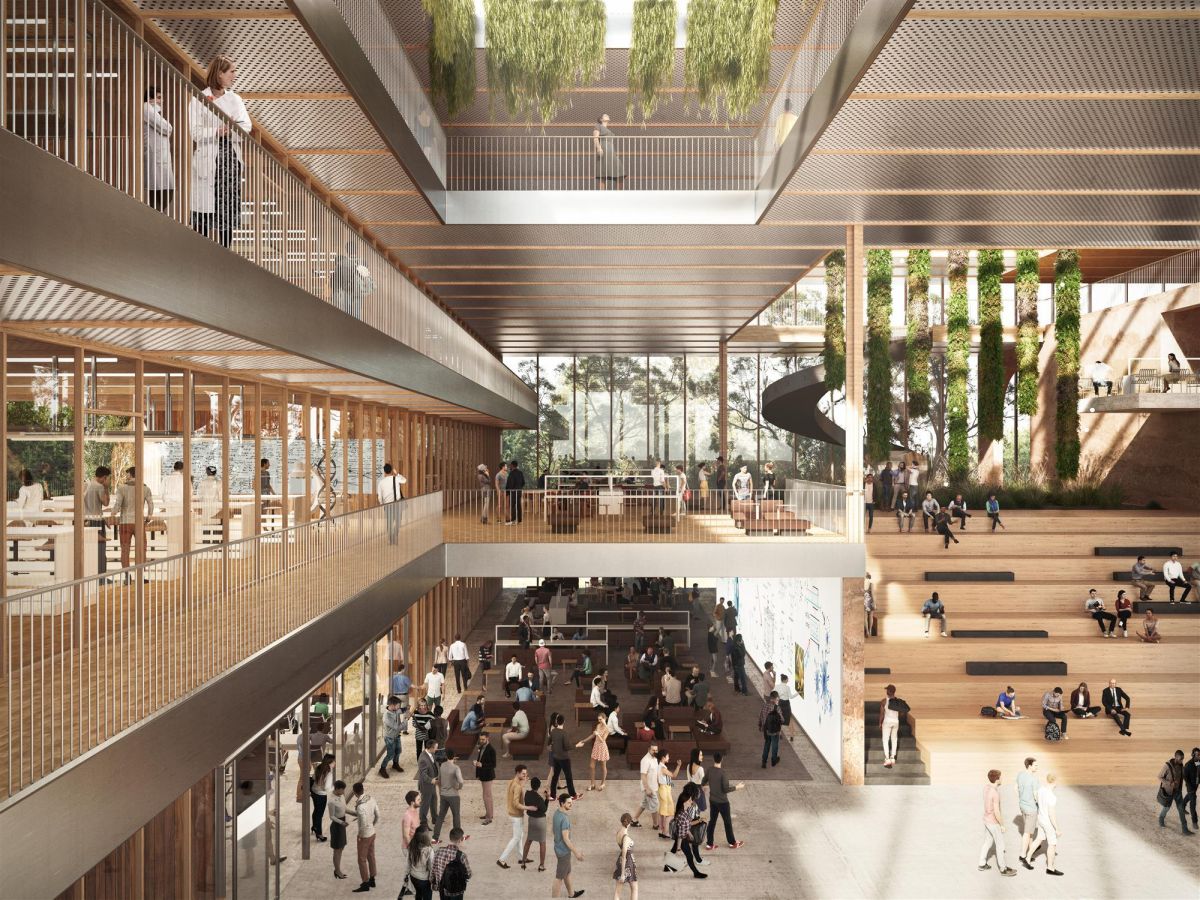Precincts: the engines of innovation

From the creative industries to science, STEMM precincts power innovative outcomes that benefit education, government, business and the broader community.
By Sheree Proposch
Cities are natural centres of innovation, with their concentration of people, organisations and activities providing the firepower to fuel change and growth. But that innovation doesn’t just happen on its own. It requires the right settings for big thinkers like entrepreneurs, researchers and visionaries to come together with a common sense of purpose, focus and inspiration.
Precincts are those places where the brightest minds and most enterprising people can pool their knowledge, skills and resources to deliver on important government, business and community objectives – and find solutions to some of the world’s most pressing challenges. From the creative industries to science, technology, engineering, mathematics and medicine (STEMM), precincts have the power to intensify innovation and enhance outcomes.
As hubs for great talent, universities – along with hospitals – are often anchors for these innovation precincts as long-established homes for research and the development of new products, services or processes.

It’s no surprise we expect these institutions to take on the thorniest issues, but there’s clear evidence showing they shouldn’t do this alone. To turn innovation into practice, universities need to work closely with industry – in both a literal and physical sense. When these institutions are located close together – sometimes alongside government bodies too – it creates the optimum environment for an innovation eco-system to flourish.
Many universities recognise this, and they’re looking beyond their traditional campus borders to build strong external connections with industry. These partnerships are not only paths to more funding and more productive research across the board. The organisations on both sides of the equation get specific, valuable benefits. On the one hand, commercial ventures gain more credibility through affiliation with a university, while academics enhance the commercial potential of their research through a business partnership.
THE RECIPE FOR SUCCESS
As major landowners and place-makers, universities have historically played a big role in shaping the physical environments of their towns or city locations. In a globally competitive environment, universities are focusing much of that influence on campus amenities that attract and retain the best staff and students.
That approach extends to off-campus precincts too. With greater focus and investment, the once-typical industrial site or bland business park is giving way to livelier, more ‘magnetic’ places for innovation and collaboration. Many of these university developments are now walkable, accessible to the community, served by public transport (or drivers for it) and enhanced by retail, culture and green space.
Those qualities are a key ingredient in the Brookings Institution’s recipe for success, which identifies five critical characteristics of innovation precincts:
1. Critical mass
2. Innovation capacity
3. Diversity and inclusion
4. Quality of place
5. Leadership
The buildings, parks, streets and other infrastructure that determine the ‘quality of place’ – whether public or privately owned – can be designed and organised to stimulate new and higher levels of connection, collaboration and innovation.
There are great examples of this both internationally and closer to home.
At Kendall Square in Cambridge, Massachusetts, significant private and government planning and investment have helped create “the most innovative square mile on earth,” according to a Boston Consulting Group report, and the birthplace of the biotech industry. Once an industrial zone, this innovation precinct is co-located with MIT to tap into their stellar talent. It has good access to transport infrastructure and strong connections to the community, which had input on key elements of planning including housing, retail, open space, historic integration and innovation space.
The University of Melbourne is developing an industry-integrated precinct for advanced engineering at Fishermans Bend, one of the city’s designated urban renewal areas. Hassell recently completed the Stage 1 Functional Brief for the 55,000sqm area, which includes an active ground floor level, spaces for makers and exhibitors, an events area, retail and landscape. The Fishermans Bend Planning Authority is overseeing complementary developments including transport, schools, child care and sports facilities.
Fishermans Bend is Aust’s largest urban renewal project covering approx. 480 hectares next to Melbourne’s CBD. The #VictorianConnection spoke to Meredith Sussex AM, Chair of @fishermans_bend Development Board to learn all the key details. https://t.co/2SPlP2Gt9K pic.twitter.com/TTJ75WklRj
— DJPR (@VicGovDJPR) June 19, 2019
THE GROWTH OF STEMM
Across governments, media, schools and universities, STEMM is rising to the top of the agenda.
With global competition for resources, talent and trade at fever pitch, scientific and mathematical knowledge – and the engineering and technological advancements they can lead to – have become crucial for economic growth. They can fuel this growth by improving the productivity of existing industries and supporting the development of new professions and industries.
Separately, the disciplines of science, technology, engineering, mathematics and medicine make major contributions to society. Working together as a cross-disciplinary group their impact and influence increase exponentially.
In Australia, each of the country’s 42 universities is developing their own version of STEMM based on their:
- disciplinary strengths
- student or research focus
- shortfalls in existing building stock
- funding links
- campus capacity
- industry connections, or
- other business drivers.
This will create an exciting national network of STEMM collaborations of all shapes and sizes – from a mini-precinct on campus to an industrial zone for large, engineering-focussed operations as space becomes more scarce on inner-city campuses.
Buildings within these precincts are also appearing in new and sometimes unexpected forms. Often cited as hidden, insular places, science and engineering buildings are increasingly connected to their communities, both literally and figuratively. Through distinctive architecture and transparent surfaces, they engage people and highlight the work happening within their walls. They also convey a commitment to innovation and a sense of purpose, which supports the university’s identity and attracts greater talent and funding.

The way space is organised in these STEMM precincts can make or break a university’s chances of making the cultural and organisational changes they need to thrive. In buildings and campuses designed to foster a genuine, cross-disciplinary culture, experimental or unconventional ways of working and interacting can become the ‘new normal’ – and that can lead to unexpected results.
The setup of the Brainport Development in Eindhoven, Netherlands truly supports the entire innovation ecosystem – from start-ups to scale-ups to large multinationals. This technology and design hub – associated with Eindhoven University of Technology and the birthplace of Philips Electronics – houses research groups arranged around clusters such as food technology, high-tech software and augmented and virtual reality. There are also plans to add future clusters for 3D printing, advanced and smart manufacturing, robotics and plastics.
The old Philips factory complex on the site has been transformed into a multi-purpose cultural and residential complex called Strijp-S. It includes spaces for conferences, concerts or other events, a walking promenade, sports zones for BMX or bouldering, and lots of open, green space for festivals and recreation.
For the University of Melbourne’s future STEMM discovery precinct, Hassell developed a Strategic Plan and Functional Brief that supports the university’s new approach to the campus – a place that’s more active, open to all and easy to move through. These design drivers come through clearly in early artist impressions.

These examples are proof of how design can make a major difference. Lively, productive settings designed to power innovation can influence the growth and development of STEMM in both the education sector and society more broadly. The best environments can also attract and retain the best students and staff in the field, support innovative teaching and research practices and help academic and industry partnerships flourish.
Ultimately, that can lead to groundbreaking approaches to global challenges affecting our future prosperity.